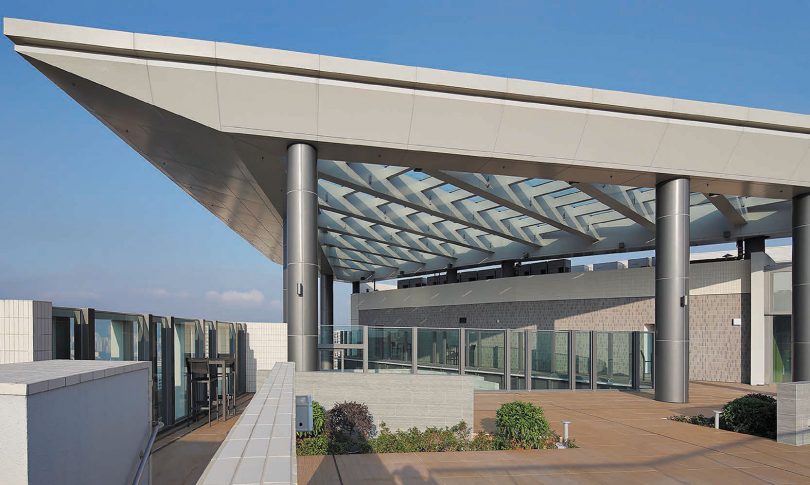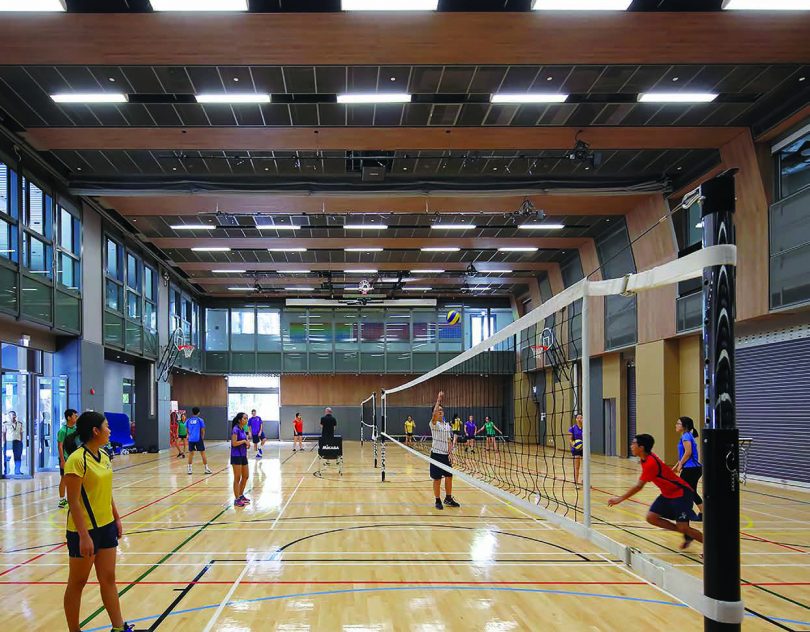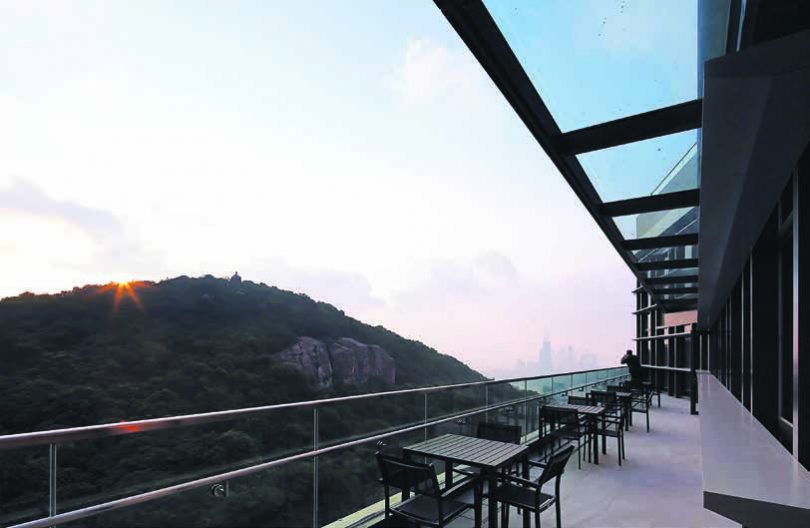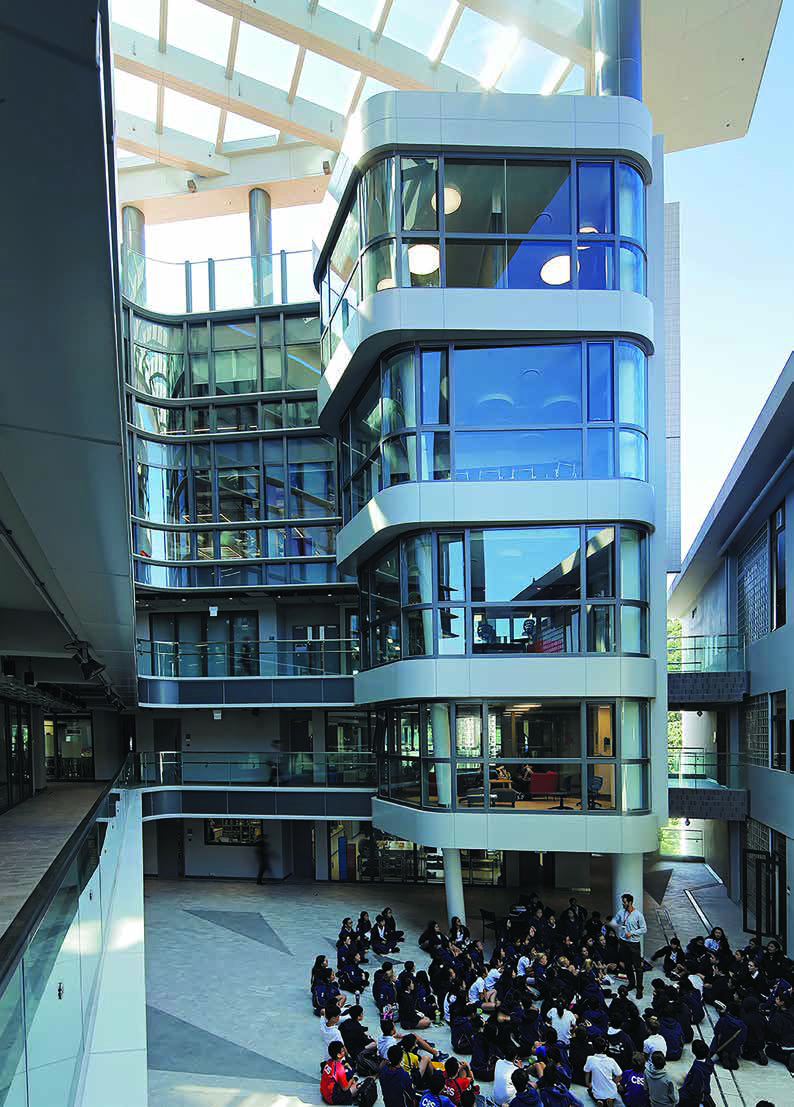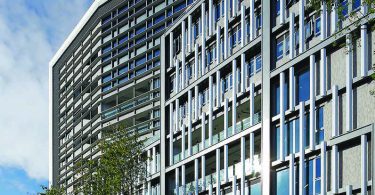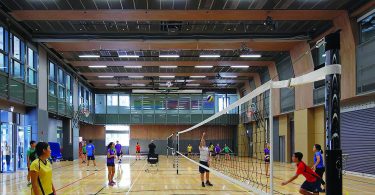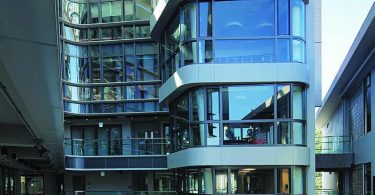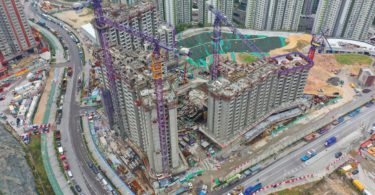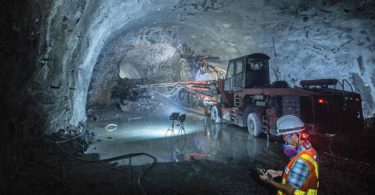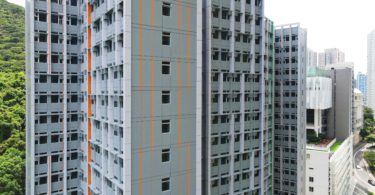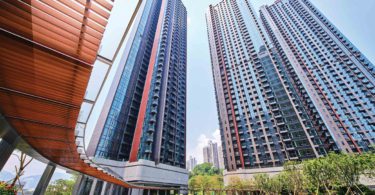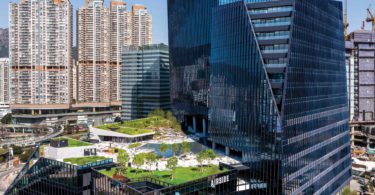The Chinese International School (CIS) is a 25-year-old independent dual-language—Chinese and English—school, with both primary and secondary divisions. This project involved upgrading the facilities of the entire campus, specifically, developing a collaborative learning centre and two indoor multipurpose sports centres that would accommodate 600 to 700 students at the same time, and re-designing the staff rooms.
Ronald Lu & Partners (RLP) designed a new 11-storey building on the site of the existing secondary gym. This building houses an auditorium, an indoor multipurpose hall, four storeys of classrooms, two storeys of administration offices and reprovisioned gym facilities.
One core design concept for the revitalised CIS campus was to create transparent event spaces, where events could be viewed from different levels through windows and voids, enhancing the generation and facilitation of spontaneous, collaborative learning.
TRADITION AND MODERNITY
Above the sports halls, an atrium connects the existing campus with three storeys of laboratories and design studios ‘wrapped’ by two storeys of teachers’ offices. A glass lantern is explicitly situated at the heart of the atrium, creating a climactic space that encourages visual communication between students inside and outside the rooms.
RLP incorporated a large number of glass walls in the design, taking advantage of the natural scenery surrounding the school. Their transparency invites nature into the interior, echoing the traditional Chinese architectural theory of ‘borrowing the scenery’ through picture windows. This concept also resonates with CIS’s mission of upholding traditional values while embracing modernity.
The façade was designed to act as a ‘transparent bookcase’ for the school—a modernised traditional Chinese ‘bookcase’ created through the artful arrangement of sunshading fins. A modern-looking moon gate at the entrance echoes with the existing moon gate, an icon of the school, to become another key element linking the old with the new.
MATERIALS
Glass walls were used in all classrooms, laboratories and design studios, breaking through the barriers of traditional isolated teaching spaces and introducing dialogue between the spaces to make the point that educational space should not be just confined to within classrooms. The whole atrium space is covered by an extensive skylight, welcoming the sky, sunlight and wind into the space, but still providing shelter from the rain.
The building’s transparency also represents the fact that the learning process is inherently humble—being open to the surroundings and new knowledge requires being transparent, absorbing information and communicating with one another. The naturally ventilated corridors on each floor are arranged with different setbacks, adding fun to the communication process.
Low-emissivity and double-glazed glass was also adopted to decrease solar heat and the strength of sunlight permeating the interior in the summer. This successfully reduces the use of air-conditioning and decreases overall carbon emissions at the same time.
OVERCOMING CONSTRAINTS
With the tight triangular site and accommodation schedule both presenting significant challenges, RLP architects had to be flexible in order to be successful. The two sports halls were located on the lower five floors, with supporting facilities wrapped around the halls. Since the lower sports hall is also used as an assembly hall with a foyer and an exhibition area, the interior design had to cater for multifunctional uses. Timber acoustic panels and retractable seating and AV provisions were used as the main design element, creating a formal yet naturalistic feeling for the space. The upper sports hall is used for more formal sports events, and was thus given a more vibrant and energetic design treatment, with blue strips adopted as the main design feature. Glass walls were used at the upper levels of the two long sides of the sports hall, which welcome audiences in the corridor to become part of sporting events.
RLP managed to sculpt a number of distinctive spatial experiences within the triangular site at different levels. These are connected visually by the void and will give students a variety of comfortable places to study, interact and relax.
REVITALISED PUBLIC SPACES
RLP embraced outstanding public space design for the new science and technology extension. The open spaces between the buildings, which enjoy excellent natural light and ventilation, will offer the students comfortable platforms for interaction that break the limitations of monotonous and passive learning. Learning is no longer limited to featureless interior spaces, but can be enjoyed in many different areas of the campus, including the rooftop where the students will be able to relax, chat and even hold shows.
The revitalised campus provides numerous opportunities for students and teachers to get in touch with nature, allowing them to study and work in green spaces, which benefit their physical and mental health. The CIS campus is thus becoming not only a place where primary and secondary school students can learn, but a beautiful place that endures in their memories long after they graduate.
PROJECT DATA
Project Name: Chinese International School New Extension
Location: North Point, Hong Kong
Completion Date: 2016
Site Area: 9,799 square metres
Gross Floor Area: 33,182 square metres
Number of Rooms: 43
Building Height: 37.43 metres
Client/Owner: Chinese International School
Architecture Firm: Ronald Lu & Partners
Principal Architect: Ronald Lu & Partners
Civil & Structural Engineer: JMK Consulting Engineers Ltd
Mechanical & Electrical Engineer: MECS Consulting Engineers
Main Contractor: Penta-Ocean Construction Co, Ltd
Images: Ronald Lu & Partners


